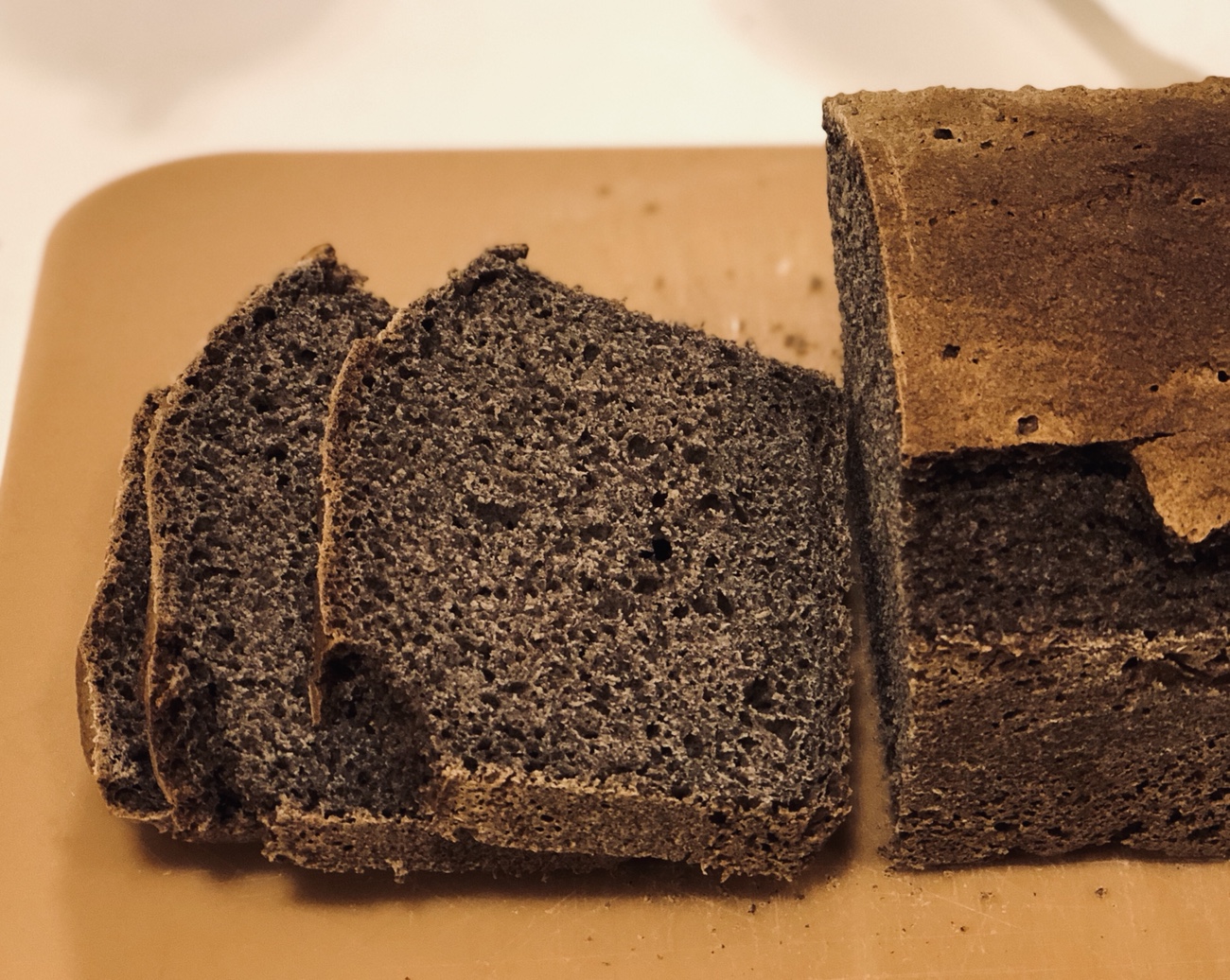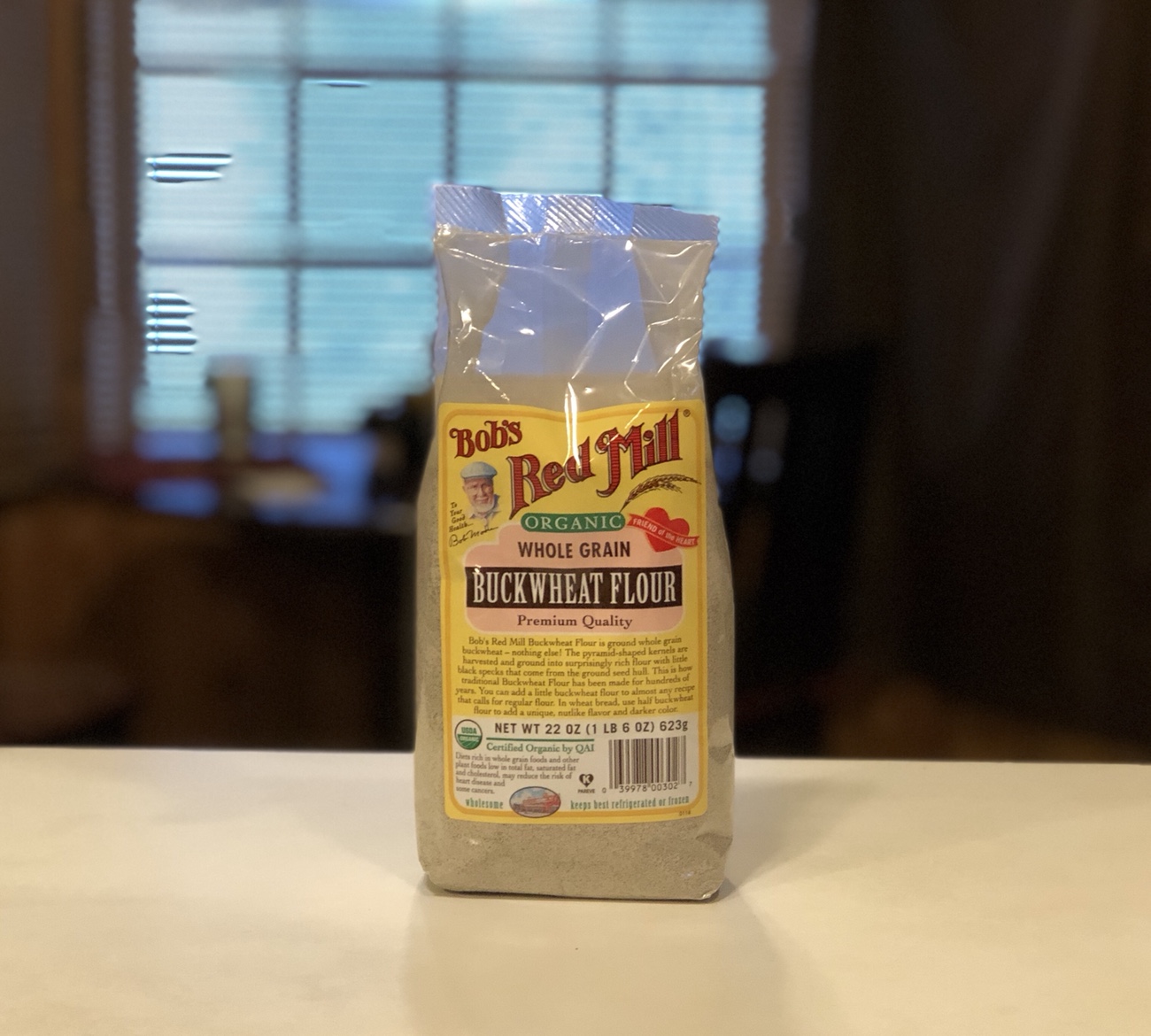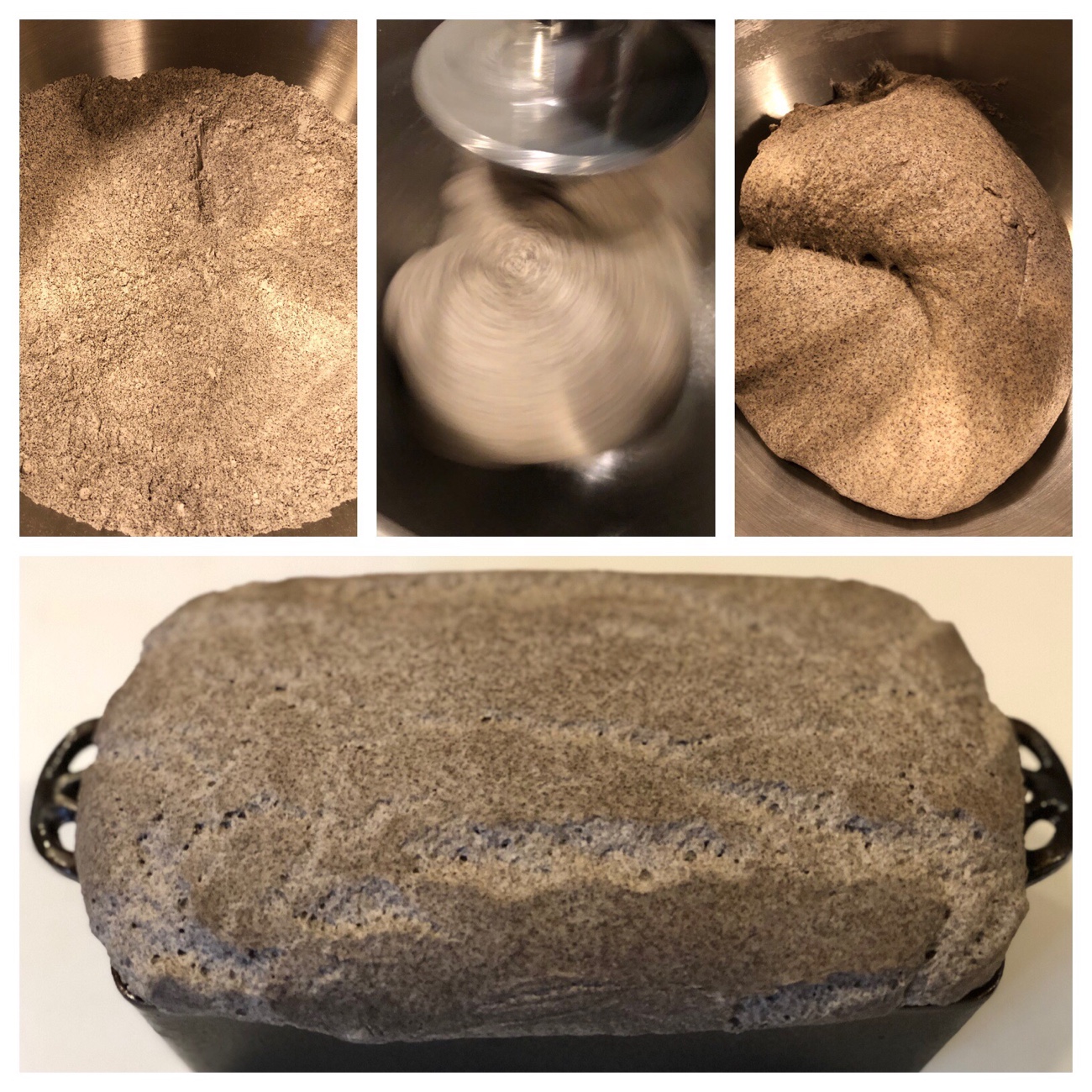
We recently made a sourdough loaf with half wheat and half barley flour, and it was fantastic. Our next experimental loaf? Buckwheat!
Unfamiliar with buckwheat? Despite its name, it’s actually not a grain like wheat and is considered a “pseudocereal”. While it may not factor prominently in American cuisine, it’s commonly used in noodles (like Japanese soba noodles), crepes (like Russian blini), and flatbreads (like Indian Kuttu ka Paratha).

Buckwheat has some impressive health benefits, too. Among them, it’s gluten-free, low/medium on the glycemic index, high in antioxidants and protein, and it contains all of the essential amino acids. The flavor is mild, nutty, maybe even a bit sweet. It even reminds me a bit of pumpernickel.
After kneading, the dough was taut and not sticky. It rose well – almost too well, swelling over the top of the pan – but had minimal oven spring.

The finished loaf had a fairly airy crumb, but was heavier than the all-wheat, partial rye, or partial barley loaves we’d previously made. In addition, the crust baked very hard.
As toast, the buckwheat sourdough is fantastic. I think the crust might be a little too crusty to be my first choice for sandwiches. Also, once cut, the bread seemed to dry out more quickly than the other loaves; in the next loaf, we’ll reduce the wheat-to-buckwheat flour to 1:3 or even 1:4 for a softer loaf.
Overall, the buckwheat made for a wonderfully rustic, heavy, crunchy-crusted loaf that would pair beautifully with a hearty winter stew. On to the next flour experiment!
